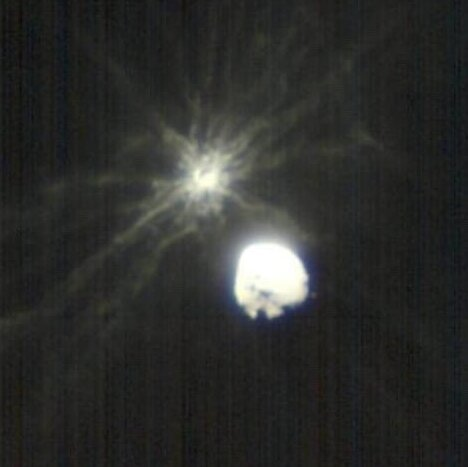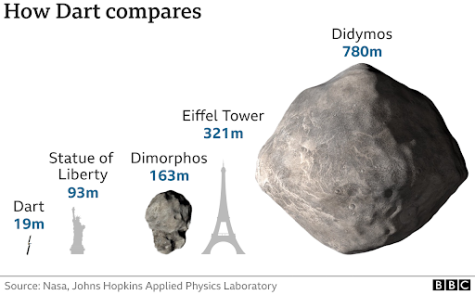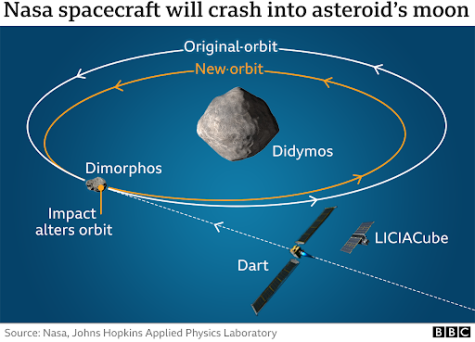NASA Succeeds in First Ever Planetary Defense Test

Image via The New York Times
NASA successfully launched their Double Asteroid Redirection Test (DART) probe which intentionally hit an asteroid on Monday the 26th. The crash artificially altered the asteroid’s trajectory. This test marked the beginning of humanity’s chances to save Earth from cataclysmic asteroid collisions.
The DART Spacecraft was a part of the preliminary stages of NASA’s Planetary Defense Strategy. DART ended its ten month journey through space to collide with the asteroid Dimorphos.
Dimorphos is a small asteroid approximately the size of a football field. Dimorphos orbits its larger fellow asteroid Didymos. Neither asteroid poses any threat to Earth. “It’s like adorable — it’s this little moon. It’s so cute,” said Carolyn Ernst, the DART DRACO instrument scientist.

NASA’s goal was not to destroy the asteroid. Instead, the objective of DART’s collision was to knock Dimorphos off its course through a process called kinetic impact. The impact ultimately did alter Dimorphos’s course, shaving a few minutes from its twelve hour orbit. This was the first time humanity has attempted to move or redirect asteroids artificially.

The Italian Space Agency launched a LICIACube (Light Italian Cubesat for Imaging Asteroids) satellite on September 11th, 15 days prior to DART’s impact. The LICIACube’s objective was to capture photos of the impact on Dimorphos and analyze the aftermath. The photos of the collision taken were released to the public on Tuesday the 27th. Didymos can be seen in the background of the photograph taken.
Although mission control at the Johns Hopkins Applied Physics Laboratory (APL) deemed the mission a success, it will still take months for LICIACube to gather all the quantitative data needed, says Elena Adams, a mission engineer.
DART’s impact may have had little significance for Dimorphos, but it was a significant first step in protecting Earth. “At its core, DART represents an unprecedented success for planetary defense, but it is also a mission of unity with a real benefit for all humanity,” said Bill Nelson, a NASA Administrator. “As NASA studies the cosmos and our home planet, we’re also working to protect that home, and this international collaboration turned science fiction into science fact, demonstrating one way to protect Earth.”

Veronika Owen is the Co-Editor in Chief for the South Lakes Sentinel. She has had a passion for writing ever since third grade. When she’s not...













